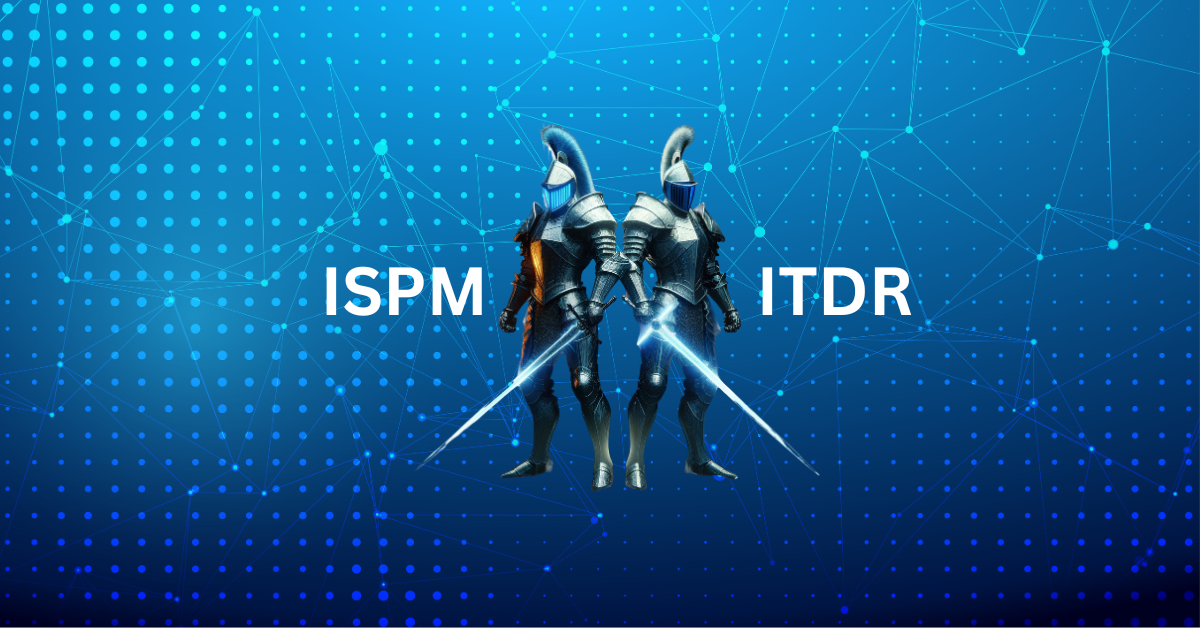- Jan 4
Navigating the Identity Security Landscape: The Power Duo of ISPM and ITDR
Updated: Jan 4

In the ever-evolving field of cybersecurity, two new solution areas have emerged to safeguard identities and an enterprise’s identity infrastructure. These solutions are identity security posture management (ISPM) and identity threat detection and response (ITDR). While they may seem similar, each plays a unique and critical role in safeguarding digital assets.
Here is a short definition of each:
ISPM offerings help enterprises proactively protect their identity infrastructure and identities. ISPM complements cloud and data security posture management by continuously discovering and assessing weaknesses in an organization’s identity security stack. ISPM improves an organization's security posture and resiliency by fixing identity blind spots and misconfigurations.
ITDR solutions help enterprises quickly detect and respond to cyber threats that target user identities and identity-based systems in real-time. By providing an identity-focused lens, ITDR complements other threat detection and response systems to reduce the time it takes to identify and respond to identity-based threats that could lead to the loss of sensitive data.
The main differences between ISPM and ITDR are:
1-Type of Security Control
ISPM is mainly a preventative control. ISPM provides continuous monitoring to enable organizations to discover and resolve identity exposures before a threat actor can exploit them.
ITDR is primarily a detective control. It detects and responds to identity-related risks in real-time. ITDR tools are typically used after a threat actor has used a specific attack path to exploit an identity.
2-Types of Use Cases
Although there is some overlap, most use cases between ISPM and ITDR are unique to each category.
ISPM use cases address identity blind spots and misconfigurations in identity systems. These include unmanaged shadow assets such as shadow directories, local accounts, and the absence of multi-factor authentication (MFA). ISPM also enables identity teams to resolve day-to-day operational issues, such as troubleshooting locked accounts.
ITDR use cases support incident investigation and response to assess the blast radius of identity-based attacks and decrease the time needed to resolve incidents. Examples of ITDR-focused use cases include identifying excessive failed authentications against assets and detecting service accounts with unusual access patterns to understand potential intrusion attempts.
3-Team Using the Tool
The Identity team generally employs ISPM solutions as they are responsible for managing the identity infrastructure. This includes an organization's identity and access management (IAM) systems, such as identity providers, active directory, multi-factor authentication (MFA), privileged access management (PAM), and identity governance and administration (IGA).
Threat teams leverage ITDR solutions to augment existing security systems. ITDR arms threat teams with threat intelligence that focuses on identity activities. This improves the effectiveness of EDR solutions, SIEM tools, and other software used by threat teams.
In conclusion, the importance of proactive posture management and threat detection cannot be overstated, especially as enterprises frequently introduce new systems and technologies daily – all of which add risk. ISPM and ITDR are crucial in protecting digital assets. They offer unique and complementary capabilities that address different aspects of identity security, from proactive management and remediation of identity exposures to real-time detection and response to identity-centric threats.
Enterprises looking to enhance their cybersecurity programs should consider incorporating ISPM and ITDR into their security roadmaps.

